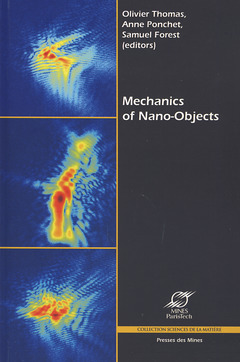Description
Mechanics of Nano-Objects
Coll. TRANSVALOR
Authors: Thomas Olivier, Ponchet Anne, Forest Samuel
Language: French
Subjects for Mechanics of Nano-Objects:
49.00 €
In Print (Delivery period: 3 days).
Add to cart
Publication date: 12-2011
378 p. · 16x24 cm · Paperback
378 p. · 16x24 cm · Paperback
Description
/li>Biography
/li>
In nanoscience, one always has to question how the basic theories we use at the macro- and meso- scales (continuum elasticity and plasticity, etc) apply at the nanometre scale. Studying mechanical properties of nano-size objects also challenges the experimental approaches: how to implement reproducible and controllable mechanical loading? How to measure fields (displacement, stress, strain, etc) with the required nanoresolution? Moreover nanoscience is often tackling the limits of continuum theories and thus simulation is an increasingly important tool to evaluate the different scale transitions needed from atoms to nano-objects. This book provides an updated view of the rapidly growing ! eld of mechanical properties of nano-objects like micropillars, nanowires, nanoparticles, nano-precipitates, nano-twins, MEMS, NEMS and structured surfaces, etc. It addresses the theoretical and experimental issues that span the field of mechanics at small dimensions: the fundamentals of continuum mechanics and the mechanics of defects, a general state-of-the-art about modelling and simulation and an overview of the size dependent mechanical properties of nano-objects. Fascinating recent advances are shown in the evaluation of displacement fields at the nano scale by X-ray diffraction and transmission electron microscopy. Examples are given of systems where mastering mechanical properties in small dimensions is key to control the ! nal aimed property (electrical, optical, mechanical, etc).
Samuel Forest est ingénieur civile et docteur de l'Ecole des mines de Paris, où il enseigne la mécanique des milieux continus. Chargé de recherches au CNRS, il travaille au centre des matériaux de l'Ecole des mines et entretien des relations privilégiées avec l'Ecole de thermomécanique de Berlin.
© 2024 LAVOISIER S.A.S.

